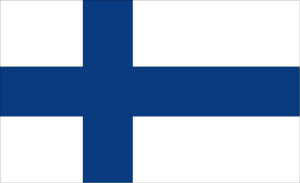




Area: 338,145 km2 (130,558 square miles)
Population: 5,246,000
Capital: Helsinki; 1,075,000
Language: Finnish, Swedish
Religion: Evangelical Lutheran
Currency: euro, 1 EUR is ca. N$10 (3/2007)
Life Expectancy: 78
GDP per Capita: U.S. $25,800
Literacy Percent: 100
ECONOMY
Industry: metal products, electronics, shipbuilding, pulp and paper, copper refining.
Agriculture: barley, wheat, sugar beets, potatoes; dairy cattle; fish.
Exports: machinery and equipment, chemicals, metals, timber, paper, pulp.
Text source: National Geographic Atlas of the World, Eighth Edition, 2004
Finland Information and History
Finland, in northern Europe, is low-lying in the south and center with mountains in the north. One quarter of its territory lies north of the Arctic Circle, and the country experiences long, harsh winters. Most of the population is concentrated in the triangle formed by the cities of Helsinki (the capital), Tampere, and Turku.
Coniferous forests and more than 180,000 lakes grace Finland, which maintains a fleet of icebreakers to keep ports open during the long winters. Despite a short growing season Finland is self-sufficient in meat, grains, and dairy products. For years, the wood and paper industry dominated Finland's exports; but now the metal and engineering aspects of industry have surpassed forest products.
After six centuries of union with Sweden, Finland came under Russian rule in 1809. The Finns declared independence in 1917 but lost territory to the Soviets in World War II. Close economic ties between the two nations existed until the U.S.S.R. was dissolved in 1991. Since then Finland has strengthened links with Western Europe by joining the EU. Helsinki remains a preeminent center for international diplomacy.
Further information:
virtual.finland.fi